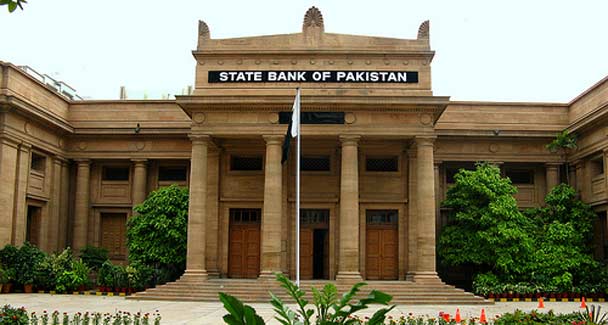KARACHI: Real Gross Domestic Product (GDP) maintained its upward trajectory, exhibiting a 13-year high growth of 5.8 per cent in FY18. Benign inflationary environment and improved law and order situation boosted business sentiments, resulting in higher credit offtake especially for fixed investment. However, this improved economic growth came amid widening twin deficits, which pose challenges for the sustainability of the growth momentum, noted SBP’s Third Quarterly Report on The State of Pakistan’s Economy released Wednesday.
The report pointed out that improvement in the crops sub-sector, especially cotton and sugarcane, paved the way for agriculture to surpass last year’s performance. Noteworthy contributions from construction- allied industries owing to CPEC and PSDP resulted in a 10-year high growth of the industrial sector. In particular, better performance of large-scale manufacturing activity was supported by robust domestic demand, improved business environment and capacity expansions in some of the industries. Strong activity in the commodity-producing sectors also led to the services sector maintaining its growth momentum.
The report cited that a sufficient supply of key food items, such as wheat, sugar and rice, resulted in subdued food inflation, which helped to partially offset the higher non-food inflation. The report also observed that the effects of PKR depreciation on inflation came into play during Q3-FY18. As inflationary expectations shored up, SBP increased the policy rate in January 2018.
On the external front, the report noted that despite a recovery in exports and remittances, a rebound in global oil prices, and higher transport and machinery imports led to a current account deficit of $12.1 billion – the highest seen during Jul-Mar of a fiscal year. Even though financial inflows were higher in Jul-Mar FY18 than last year, they were still insufficient to finance the current account deficit. Resultantly, SBP reserves dropped to $11.6 billion by end-March, and the Rupee depreciated by 9.6 per cent cumulatively during Jul-Mar FY18.
On the fiscal side, the report highlighted the increase in the fiscal deficit to 4.3 per cent of GDP during Jul-Mar FY18, surpassing the full-year target of 4.1 per cent. A sharp increase in both current and development expenditure, largely emanating from the jump in provincial spending, amid slower growth in Q3-FY18, drove the higher deficit. The revenue growth decelerated, primarily due to a slowdown in indirect tax collection on account of lower banks’ profitability and voluntary payments. Factors such as higher external borrowings and revaluation impact also made matters worse for the government in the face of Rupee depreciation.
In sum, the sustainability of current growth momentum rests on effectively managing the internal and external gaps. On the external front, there is a need to arrange external financing in the short-term and resolve structural issues affecting competitiveness in the medium and long-term. On the fiscal side, the rationalizing of expenditures may help reduce some stress temporarily, the reforms are needed to expand the tax base and enhance the efficiency of the tax system to put the internal finances in order.




